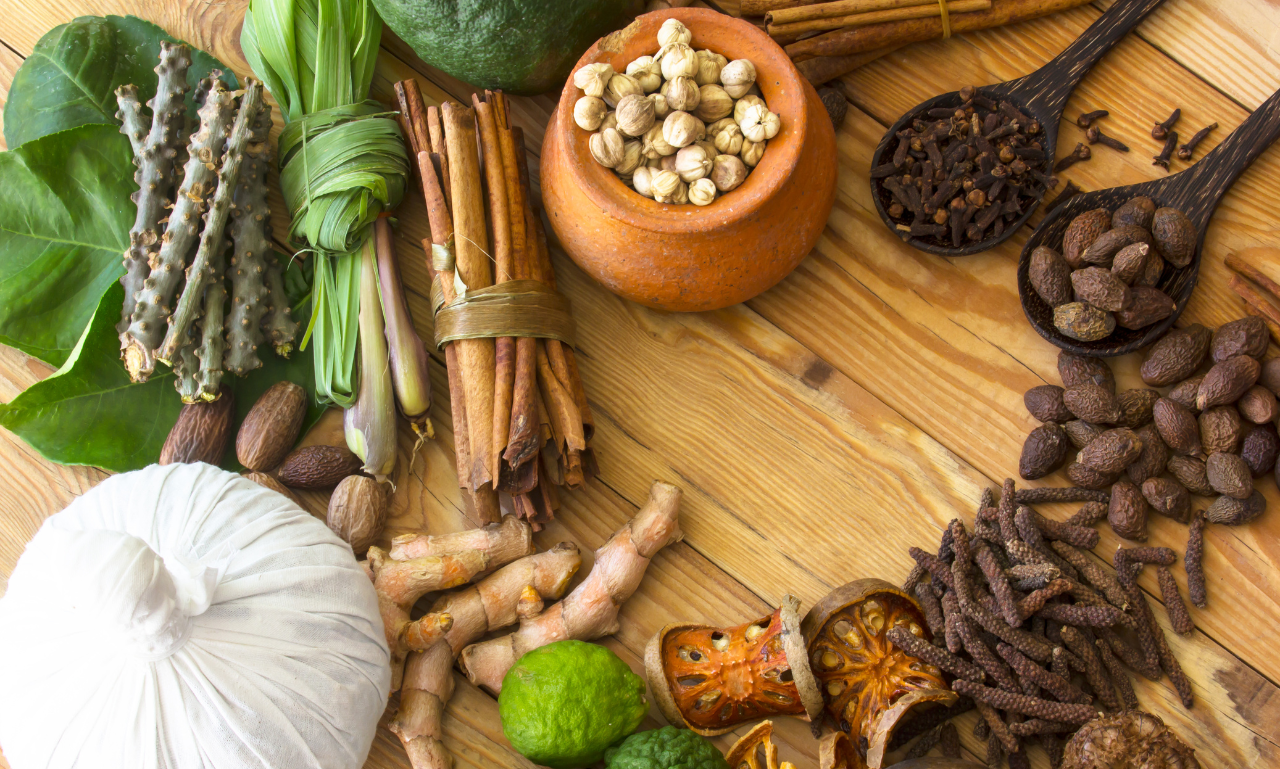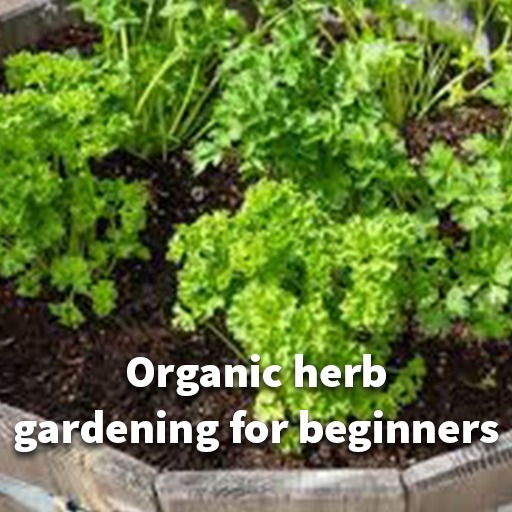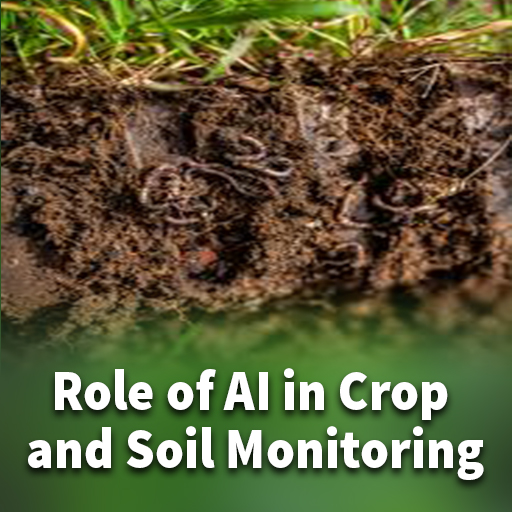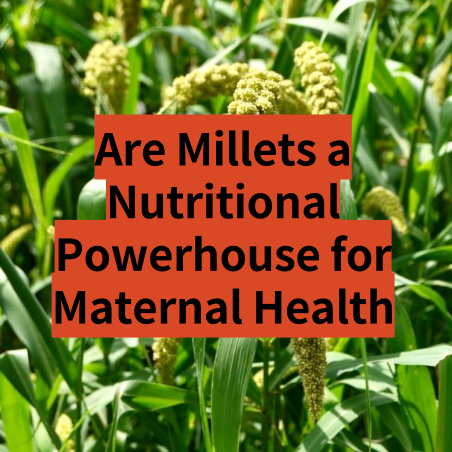A garden that includes herbs is a garden that is complete. If you don’t have much room, they might be the only thing in your garden. The benefits of having an organic herb garden, including the plants’ low upkeep requirements, many practical applications, and pleasant aromas, are more than sufficient to justify the effort. If you’re interested in learning more about Organic herb gardening, keep reading!
There are a number of advantages to having your own herb garden. Fresh herbs may be used in a variety of ways, from enhancing the flavour of food to perking up a cup of tea. Herbs are great for beginner gardeners since they thrive in a variety of conditions.

It doesn’t take long at all to plant and tend an organic herb garden, and the harvest may be used for culinary or financial purposes. In fact, you may see profits, perhaps substantial profits, in as little as a month.
Here are some tips for making it big in the herbal products market:
1. Start With Picking A Location
When planning an Organic herb gardening, it’s important to determine if the area faces north or south. You may choose what to plant and where to put it according on how much light each region gets. Site selection is important, so here are some things to think about when planning a garden for the first time.
You might expect more sunlight on the south side of your home and less on the north. If you want your plants to thrive, you need to put them in a location that faces south. The shadow of trees and bushes will prevent your plants from getting enough sunlight and water.
Whether you have a large garden in a suburban area or a little balcony in a city, as long as you get at least six hours of sunlight every day, you can produce your own herbs. Keep trying, even if the shaded areas are the only ones that will allow you to flourish. Plants like cilantro, parsley, and mint need at least three to four hours of sunlight every day to reach their full growth potential. There must be water availability as well.
You shouldn’t put your organic herb garden in a windy area since it’s hard on young plants and might limit the access pollinators have to your flowers. Likewise, you should not spend time in the low spots of your garden since that is where frost is most prone to form.
Pick a spot within easy reach of the kitchen so you can quickly grab some oregano when you need it when making a sauce for pasta. In addition, locate your herb garden in a prominent spot. This will have several benefits, such as making you more aware of when your plants need watering or if pests have invaded your home.
2. Buy some basic garden tools
A good set of gardening tools is a worthwhile investment if you’re planning a garden and are just starting out. You may find yourself spending a lot of money on new gardening equipment if you skimp on quality. In order to tend a garden, you’ll need the following:
- Dirt Rake
- Spade
- The use of a leaf rake
- Garden shovel
- Pruning Shears
Don’t waste your money on ill-fitting or low-quality equipment. To lessen the likelihood of being hurt while gardening, go to a local garden shop and pick up some appropriately sized equipment. Keep the equipment sanitary and well-maintained to stop the transmission of diseases.
3. Soil Conditions
The ideal Organic herb gardening location will have good drainage. Planting on raised beds or elevated rows is recommended if water pools in your accessible site. If possible, stay away from any areas where there is lot of foot activity.
If you have a sunny place in your yard with rich, well-draining soil and no shade-loving trees or plants, you should have great success planting a herb garden in the ground. Instead of planting directly in the ground, a raised bed garden is a great option for areas with less than ideal soil.
Load it up with some high-quality Raised Bed Soil, specifically formulated to support plant development in such an arrangement. But if you just have a little space to cultivate in, you should try growing in pots instead. Put Potting Mix in containers so you don’t have to worry about over or under watering.
Potting mix is preferable to potting soil because it has better drainage and more organic herb elements. Plant them in a soil mixture that is somewhat acidic, like that used for azaleas and roses.
Plant them in a soil mixture that is somewhat acidic, like that used for azaleas and roses. enrich the soil.
4. Improve soil quality
In general, plants thrive in soil that is both rich in organic herb matter and has good drainage. Before planting outside, amend the soil with organic herb material. Also, clean up the area around the plants by getting rid of any big rocks, stones, or other garbage that could be there.
Testing the soil’s acidity is also important for a healthy herb garden. A pH of 7.0 or above is ideal for most plants. However, there are plants that like slightly acidic or slightly alkaline soil. A soil test kit can be used at home, or soil samples can be sent to an agricultural laboratory for analysis.
Combine equal volumes of compost, shredded pine bark mulch, and vermiculite for use in planting containers. Alternatively, you may buy pre-mixed potting soil specifically for containers.
Follow the instructions on the seed packets for your area’s climate. In most areas, planting seeds in the spring or autumn is optimal. For certain seeds, light is an absolute need for the germination process. Consequently, peruse the labels for advice on how deeply to plant seeds. Don’t risk killing any immature plants by transplanting them until frost risk has passed.
5. Exposition to Sunlight and Water
Plants need water, so be sure to have enough available. To make watering plants easier, choose a spot close to a reliable water source. Typically, a one-inch weekly watering is required for garden plants. Carrying heavy water buckets and dragging a hose might slow you down. Overwatering and having water splash on the leaves both contribute to the spread of disease in plants.
Water, but not a lot of it! Keep the little tags that are attached to my plants so you can easily reference the watering schedule. As a rule of thumb, you should wait until the soil has dried up before watering your herbs. Provide them with some light. A southern-facing window will provide the optimal amount of light, at least 8 hours every day.
6. Pick Your Herbs
Get practically all the common herb types that can survive in your location. Herbs should be chosen with an eye on the earliest and latest projected frost dates, as well as the USDA hardiness zone in which they will thrive. It will tell you when to sow tender plants so they won’t be damaged by frost. Make sure the southern exposure gets the most sun-loving plants. It’s important to choose cool-season and warm-season crops that work well in your region.
Invest in high-quality seeds for the plants you’ve chosen. Transplants grown from seeds are another option for starting your own kinds. Some varieties of nursery-bought transplants are disease-resistant and may grow well, eliminating the need to start from seeds.
If you like mint lemonade on occasion, you should plant some mint. Basil and oregano are two herbs that you should focus on if you like Italian food. Ideally, you’ll grow a selection of herbs that you’ll like using on occasion. Keep in mind that many herbs have therapeutic characteristics and might prove to be very useful to you, particularly if they are grown in an Organic herb gardening setting.
Select perennial herbs for year-round usage. Oregano, chives, thyme, parsley, basil, rosemary, sage, and tarragon are great places to begin. Although technically not a herb, aloe vera gel may provide soothing treatment for skin irritation.
Listed here are the five most beneficial herbs for organic herb gardening:
● Rosemary
Because of its high concentration of antioxidants and anti-inflammatory compounds, rosemary has been suggested as a means of bolstering the immune system and increasing blood flow. Rosemary has been shown to improve both short-term and long-term memory function and quality. It has also been shown to increase mental sharpness, awareness, and focus.
When cultivating rosemary, be sure to provide the plants well-drained, sandy soil and six to eight hours of sunlight every day. Rosemary, which is used to make these plants, can’t handle winter temperatures below 30 degrees Fahrenheit, therefore they do best in warm, humid climates.
● Chives
Almost all of the benefits may be attributed to the high levels of flavonoid antioxidants found in chives. These antioxidants contribute to cancer avoidance, better heart health, and inflammation control. They aid in detoxification and promote better skin health. As an added bonus, the fibre content may help with gastrointestinal issues.
Chives need full sun and a soil rich in organic herb matter that drains well. The soil has to be tested. An optimal pH range is between 6.0 and 7.0. They may survive in somewhat shaded areas, but they thrive when given six to eight hours of daily direct sunshine.
● Oregano
The antibacterial properties of fresh oregano are very notable. Antimicrobial phytonutrients found in it make it effective against staph infections. It’s rich in antioxidants, fibre, vitamin K, manganese, iron, vitamin E, tryptophan, and calcium, all of which work together to protect cells from harm.
Set your 8- to 10-inch-apart oregano plants in a sunny spot with a soil pH of 6.5 to 7.0, and you’ll have a crop that’s sure to please. Plants need to be shaded if they are to thrive in hot conditions. For healthy plant growth, amend your native soil by mixing in several inches of aged compost or other rich organic herb materials.
● Thyme
Thyme is used to cure a wide variety of ailments, including the common cold, the flu, bronchitis, whooping cough, sore throat, colic, arthritis, gastrointestinal distress, parasitic worm infections, and skin issues.
Thyme thrives at high temperatures under full sun. If you’re growing in a container inside, place it near a sunny window. It’s important that the ground drains well so that people don’t have “wet feet.” Compliment your garden with additional drought-resistant perennials.
● Basil
Basil is rich in antioxidants. These antioxidants assist the body in its fight against free radicals, which may harm cells and increase the risk of a variety of diseases.
Although 6 to 8 hours of daily sunshine is ideal, basil may also be grown in partial shade. Soil moisture is required, but good drainage is also essential. When growing basil, a container or raised bed with enough drainage is ideal.
Conclusion
The many benefits of fresh, organic herbs may be better appreciated with the knowledge gained from following our step-by-step guide to starting your own organic garden.
Establishing an Organic herb gardening from scratch is easier than you may believe. Keeping a few things in mind will allow you to relax and appreciate your cultivated herbs. While it may be simple to get a beginner garden started, it will need consistent effort to keep it looking well. Pests including aphids, slugs, and snails should be watched closely. To protect your plants from these pests without harming them, try using some of the natural methods out there.
If you are going on vacation, don’t forget about your plants. Instead, consider hiring a gardener to tend to your greenery. You may quickly go from inexperienced gardener to expert with only a little bit of practice. For more details visit us.












